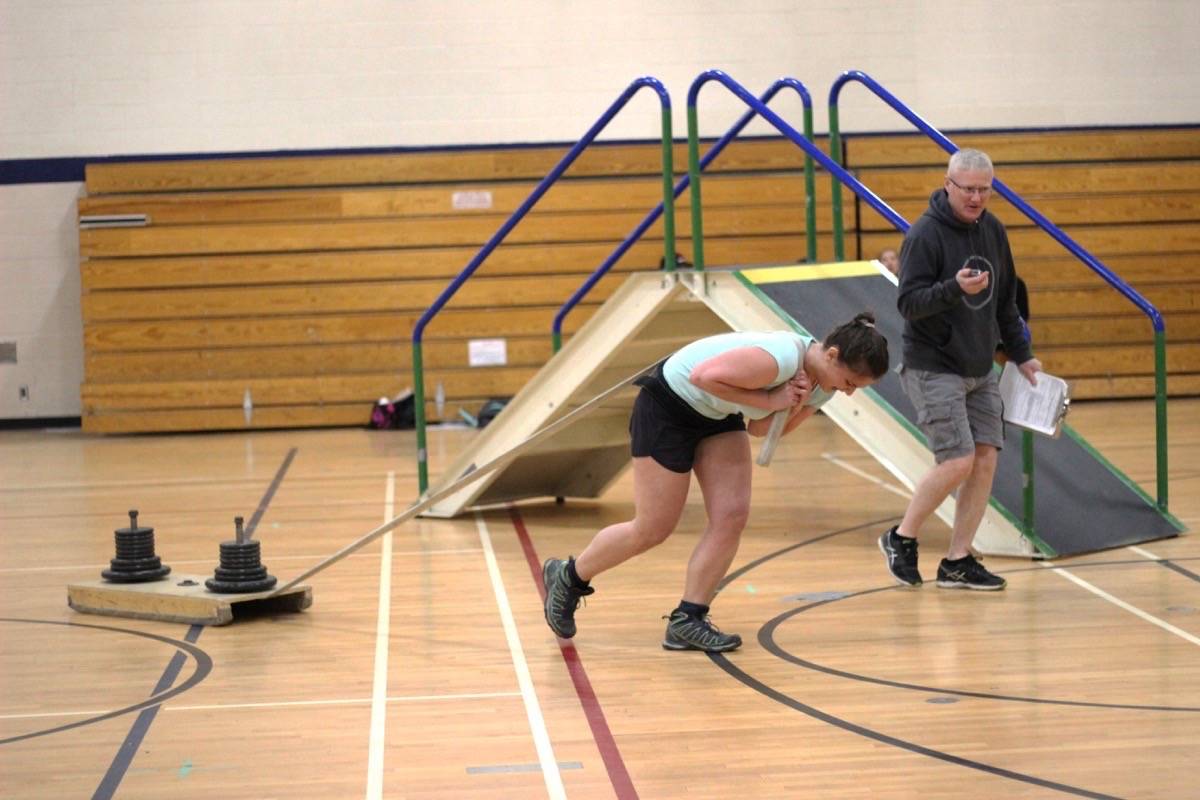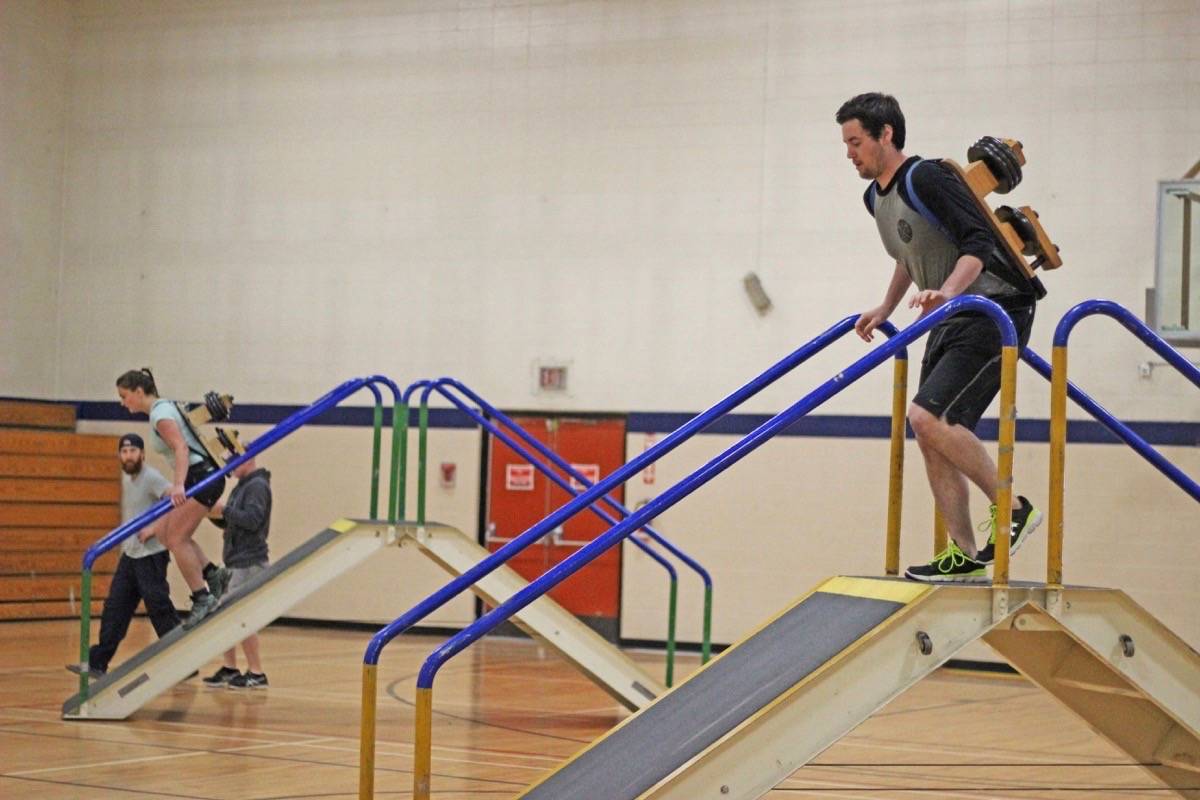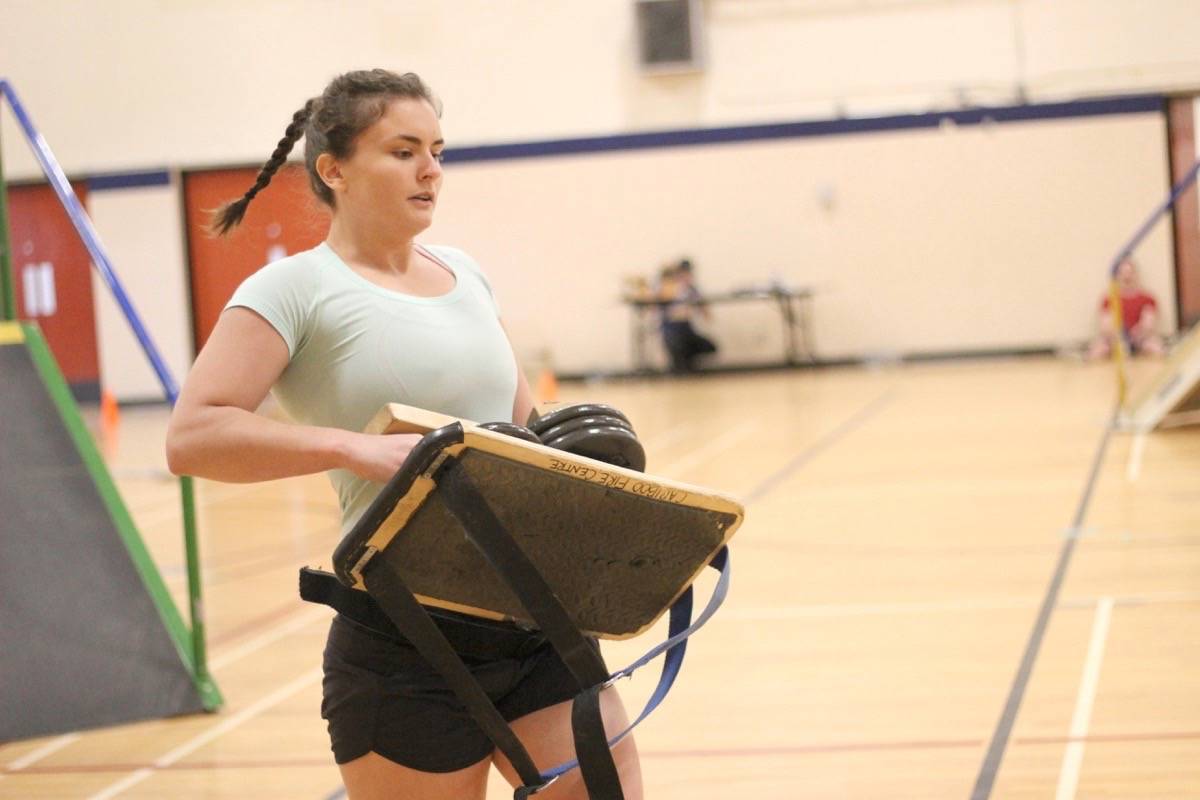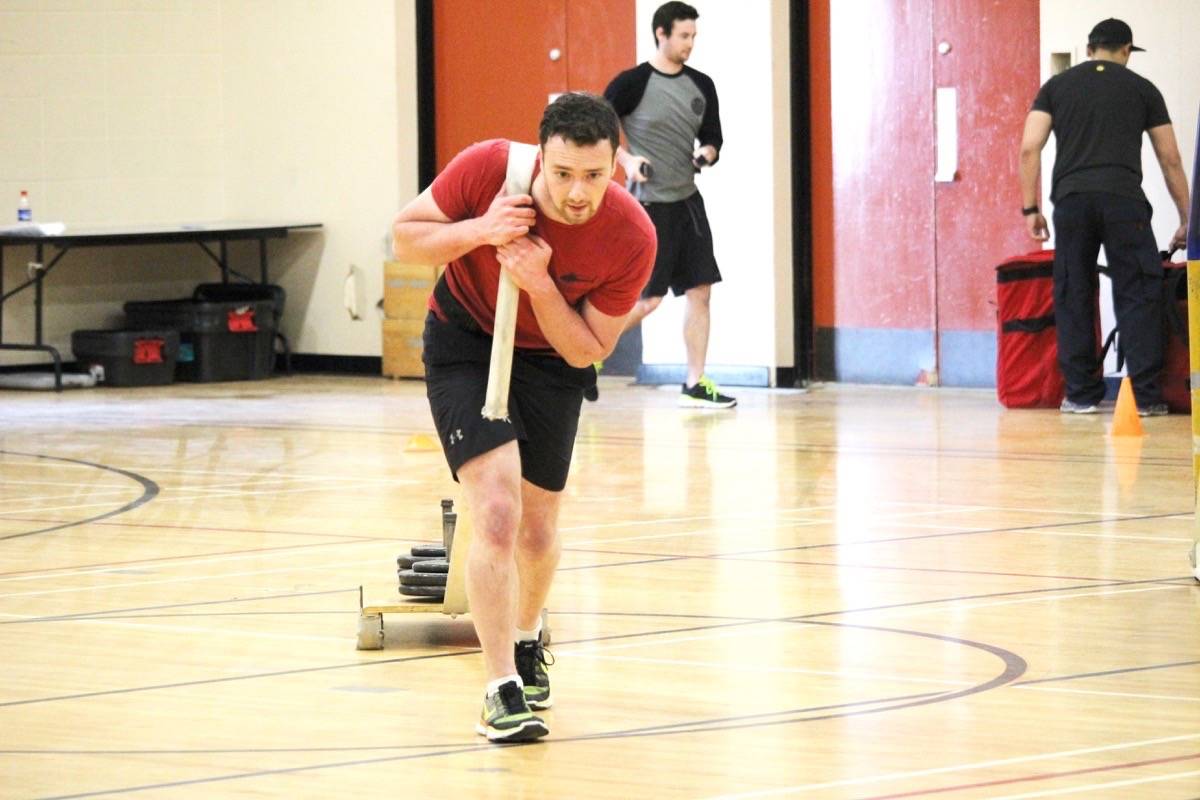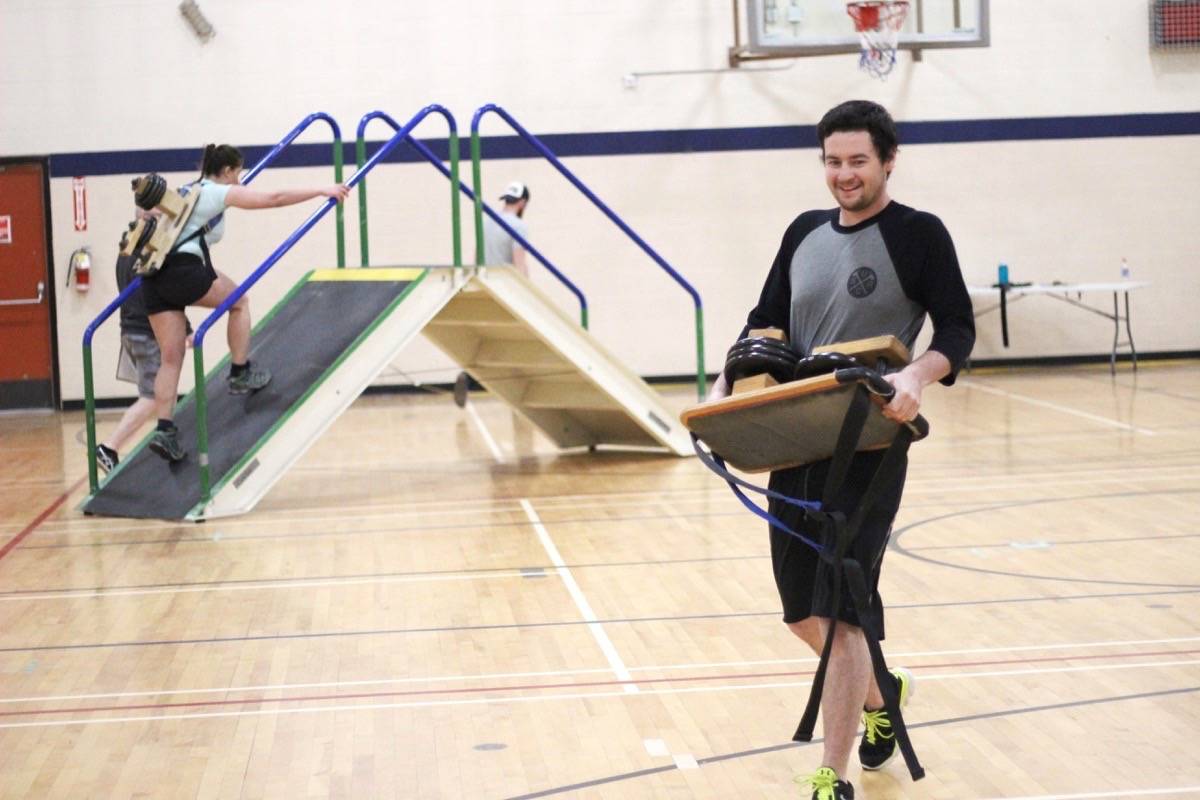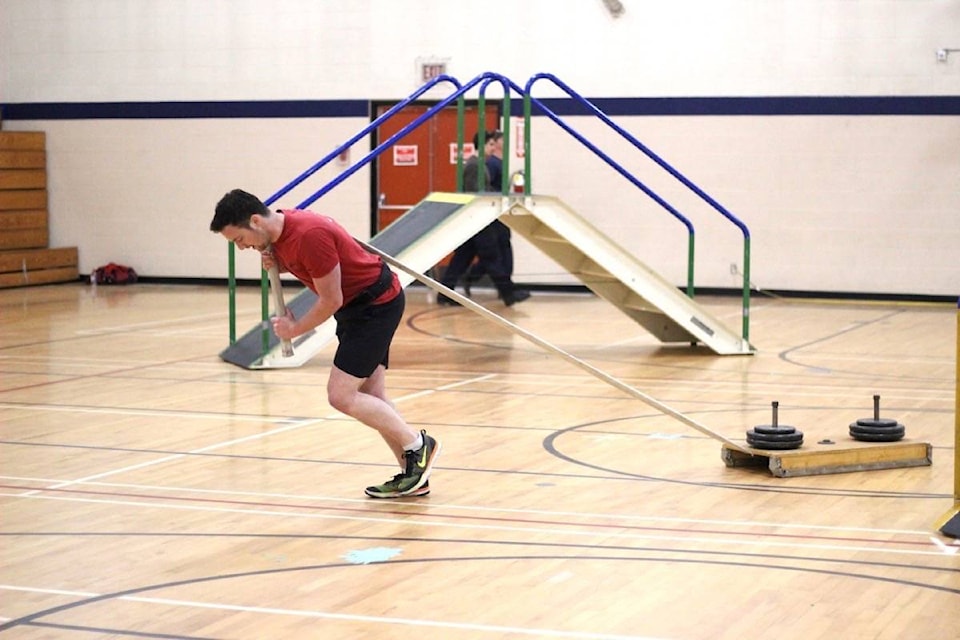Straining under the simulated weight of a water pump — 63 pounds worth — a recruit for the Cariboo Fire Centre pulls herself up and down a ramp.
After four laps of the 40 metre course, she switches the weight so she is carrying it upright, and repeats the laps, although only twice this time.
Soon, she lugs on a large red backpack, this one is 55 pounds heavy, the amount you might carry in a pack full of hose, and repeats the trip, back and forth, back and forth, 25 times, a distance of one kilometre.
Still, there’s one more part to go. She picks up a hose and drags a weighted sled (it’s a drag force of 18.5 kg.) for two final laps, simulating pulling a charged hose behind her.
She’s tired, but everyone in the Thompson River’s University gym yells encouragement at her, until she crosses that finish line under the 14 minutes and 30 second time that’s required to pass.
It’s a fitness test, called the WFX-FIT test, that the BC Wildfire Service requires each of their firefighters to pass before they can head out on active duty with the fire centre.
With almost half of the Cariboo Fire Centre recruits starting work on April 30, it was also the first day on the job of the season for many taking the test.
“For me, this is the hardest part of the job,” said Carly Magnuson, a crew member with the Cariboo Initial Fire Attack Crew (CIFAC)
“But that is good, because you want to be prepared for difficult things, so it preps us.”
Magnuson said she spends all year preparing for the test, heading to the StairMaster with a pack on her back while she is at university. She admits to finding the test difficult because of her stature — it takes her four steps to climb the ramp, compared to many people’s two.
“At boot camp last year, I almost failed, so I was like, ‘I have to do this.’”
It’s rare for returning crew members to fail, said Eric Kopetski, a wildfire technician at the Cariboo Fire who manages CIFAC, the Junior IA program and recruitment, but at boot camp he said you’ll see around two to four people out of 70 not pass the test.
Still, the test is meant to make sure that firefighters can perform their duties in the upcoming season.
“It tests your endurance,” said Donovan Wilkinson, a crew leader with Vesta, a unit crew based out of the Cariboo Fire Centre.
“I’d say it is probably the top requirement to stay fit. It’s most of the job.”
Wilkinson has been back at the fire centre since February, re-certifying and doing training for the upcoming season.
While he admitted to not finding the test quite as difficult as Magnuson, he does stay fit when not on the job.
Firefighters also allocate time for exercising — when they’re not on the fire line. When they’re on the job, that’s more than enough exercise, something the fit test helps prepare them for.
“The 14-and-a-half-minutes you have to do it under is a higher pace than in the field, but when you have 12 to 16 hour days it relates,” he said.
“Some fires we work long hours in steep and rocky terrain and it can be tiring, especially after two weeks. It’s a scale between tired and absolutely exhausted.”
Magnuson thinks similarly.
“On average it’s not always this hard but there are times where you have steep terrain and you have to go, go, go. This test is good because you are prepared for this.”
Still, it’s a mental game, she said, though it helps to have people cheering her on.
“All my hard work paid off,” she said, obviously elated.
Magnuson said she is looking forward to the season this year, both because of and despite the fires of last summer.
“It’s rewarding knowing I accomplished a season like that. I was so close with my crew and I had fun despite it being such a hard season.”
Right now, Kopetski said crews are working hard on training and prepping gear.
“We’re now getting into responding to fires and prescribed burns, and trying to balance training with demands for potential flood response, but our focus is preparing for fire,” he said.
“We’re all hoping it will be nothing compared to last year, but we certainly are ready and getting prepared.”
